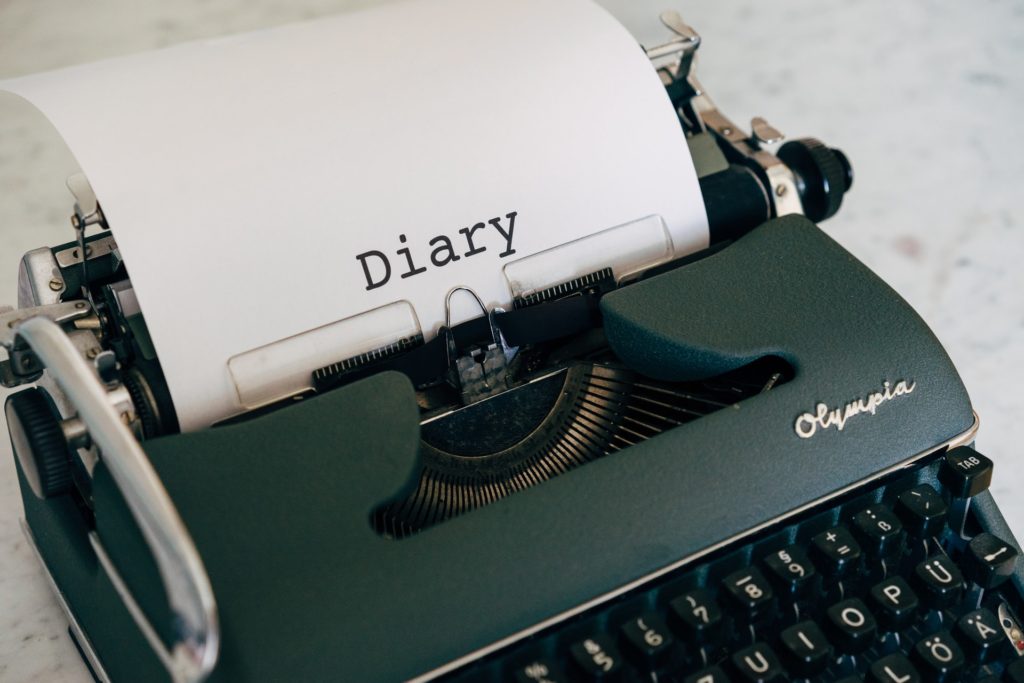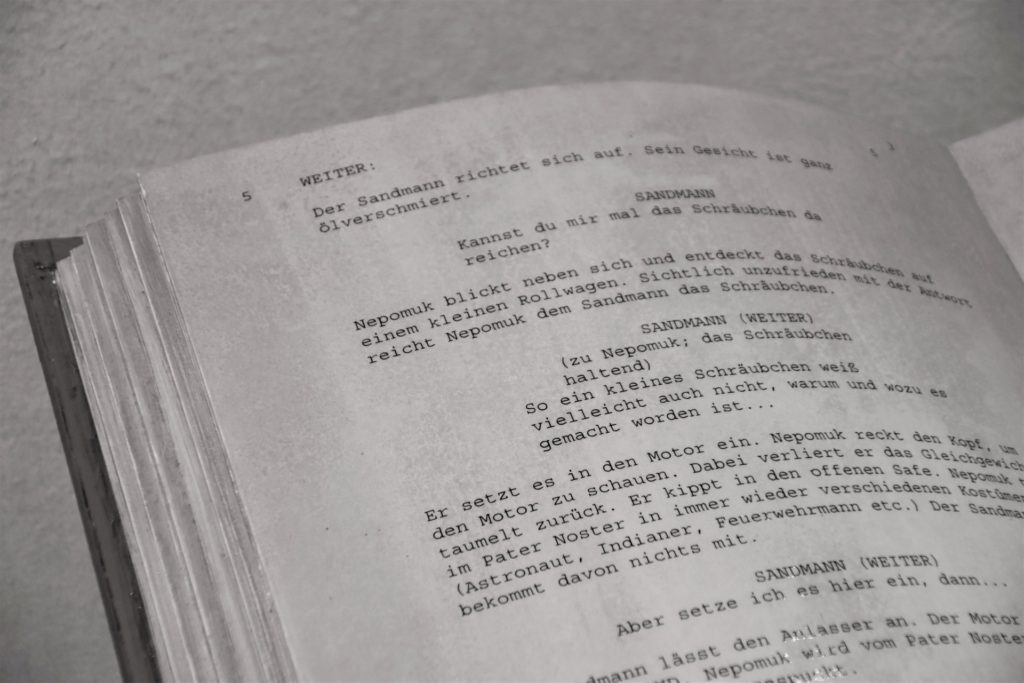Why Screenplay Formatting is More Efficient Than Prose Writing
What do you do when you get a great idea in your head? When that sudden burst of inspiration comes when you’re standing in the grocery store? Usually, you write it down in your phone, a little blurb in the Notes app. Could this idea become the next big movie, television show, or novel?
You’ll never know until you actually sit down to write it out. And when you do, it’s more efficient to write in Screenplay formatting.
Screenplay Software

But first, you’ve go to get your hands on some good screenplay software. If you don’t mind paying for it, Final Draft is the industry standard and very easy to get the hang of. If you’re a student you’re in luck, Final Draft offers a semester-long free trial, which is a great way to learn the tools and format at a competitive industry level.
If you’re looking for free screenwriting software Scrivener, Manuskript and Celtx are all great options. This post offers some more great free software.
Barebones Format

Any good screenplay has to start with the title. The screenplay title page is very important to the professionalism of your script. The title of your story should be centered on the page in the official screenplay font which is Courier New and under the title should be By Your Name Here.
In the bottom left corner, it is also important to add your contact information so if someone reading it likes your work, they can get in touch with you. Now that you’re set-up, you’re ready to write efficiently.
Firstly, Screenplay formatting comes with all kinds of conventions and special tools for a good flowing screenplay. Ever screenplay starts with FADE IN: and then an extremely sparse description of the scene. Establish whether or not the scene is indoors or outdoors with either INT or EXT for interior or exterior and then give a one-word description of the location. Like OFFICE, PARK, GARAGE.
The last thing the opening line of a screenplay needs is a time of day. Establish this with either DAY or NIGHT. With just three words the scene is set in proper screenwriting format. A screenplay format example of this might look like.
FADE IN:
INT. COTTAGE. DAY.
Establishing a location like this in prose writing could take either a paragraph or the entire page, its completely up to the writer. In prose writing, there is no structure like there is in screenwriting. Establishing the scene could take as long as the writer chooses.
Some writers like using rich details to build worlds and some keep their descriptors short. Neither is incorrect or makes for bad writing, but for efficiencies sake, screenwriting formatting is a system built to make writing productive.
How To Write Emotion
Secondly, a good tool for effective screenwriting is to never write what can’t be shown on camera. This means that the camera can’t capture internal feelings like loneliness, helplessness, joy, or fascination. The only thing the camera can track is action. So for a good screenplay, it is important to focus on actions that can portray those emotions.
A screenplay example of this would be instead of writing that a character felt lonely, a more efficient way would be to say ‘the character looked around and saw that they were alone.’ Screenplay formatting does not get bogged with the character’s feelings or internal reactions like prose has the capacity to.
Instead internalized things are shown through action or an internal monologue which can also help deliver information to the audience. The screenplay format does not function well with elaborating on the internal feelings of characters, this means that the writing process can be succinct because its focus is on the action.
Exposition
Thirdly, screenplays often stay away from the belabored exposition. Similarly to establishing location, how exposition is created in prose is up to the style of the writer. There are no conventions about how much exposition is necessary and how to include it.
Often in prose, the beginning of any story is expected to be exposition, with the introduction of characters and relationships. In screenwriting the exposition is supposed to be woven throughout the beginning of the plot. This is because it is often boring to watch exposition play out on screen.
When writing screenplays this makes the process more efficient, because you can begin with the action right away. The trick to creating exposition in a screenplay is to only include what is necessary for the audience to know, and to do so naturally. What the audience needs to know in a movie is far less than what they expect to know from reading a book of prose. This makes the screenplay format and an efficient tool for writing.
Dialogue

Additionally, the way dialogue is written in screenplay formatting is unique and different from prose. There are no qualifiers like ‘she said’, ‘he exclaimed’ in screenplays. Instead in a script, the line of dialogue is written under the speaker’s name in all caps, like MAX: followed by the line. Screenplays also don’t use quotation marks.
By giving each new line of dialogue its own new line of the page the pacing of the scene can be determined from a read through and the page looks relatively clean, with ample white space. This makes the reading easy on the eyes and is metric studios use to sort through scripts.
It’s also a productive way to write, hitting a page count in a screenplay is a lot easier than in prose. All of the tools outlined here can be seen in famous screenplays of critically acclaimed movies, like the Pulp Fiction screenplay by Quentin Tarantino. A great way to become familiar with the conventions of screenplays is to look at sample screenplays or examples of free screenplays online. Often times you can find the scripts for your favorite movies on Google!
The Ending
Once you’re done writing you have to think about how to end a screenplay. Prose and screenwriting differ here again. When writing prose there is an expectation to wrap up the story at the end, to come to a satisfying conclusion.
In screenwriting, there is less expectation. Think about how many movies end leaving you wanting more. A movie that uses its open ending capabilities purposefully is a test to a good screenplay.
Another benefit to the efficiency of the screenplay format. Of course, all of these decisions can be flushed out in a screenplay outline. Similarly to prose, having an outline always helps the writing process.
Practice and Opportunity

If you really think screenwriting might be your passion a great way to get practice, learn the tools, and have others read your work is in a screenwriting course. What better way to learn than with your peers who are also interested in the difference between prose and screenplay and are passionate to learn. Academic screenwriting fellowships might be a good fit for those already in higher ed or those who are seeking the notoriety of a fellowship.
For those who are looking for a good community of amateur writers, an online screenwriting course might be for you. Good online classes can be found at masterclass.com The screenwriting one is taught by Aaron Sorkin!
Once you have your screenplay, it’s been edited and work-shopped you’re ready to send it out. If you want to go the Hollywood route with your script you’ll have to write up a screenplay treatment. A treatment is a summary of your script. It highlights the characters, their arcs, and the main conflicts and themes of your story.
Executives rarely read scripts but they’ll read your treatment! Another good tool to have when send your script around Hollywood is to have a screenwriting agent.
Hollywood
If you don’t think Hollywood is for you or your screenplay, you can go with the festival and competition route. There are plenty of screenplay competitions and screenwriting competitions. The blog Studio Binder offers some great resources. This particular blog offers some great options for screenplay contests.
Don’t be afraid to get your screenplay out there! Any place that’s advertising for screenplay submissions, submit yours! You never know what might happen.
The screenplay format lends itself so perfectly to efficient writing, get out there, and write YOUR screenplay! Check back in with us here at The Film Fund for more helpful tips and if you want to make your screenplay a reality, enter our funding opportunities.
Would highly recommend ‘Fade In’! It’s very easy to use, very efficient and doesn’t have the bugs or crashes that I found plagued ‘Final Draft’. Plus it’s a lot cheaper.
Great tip!